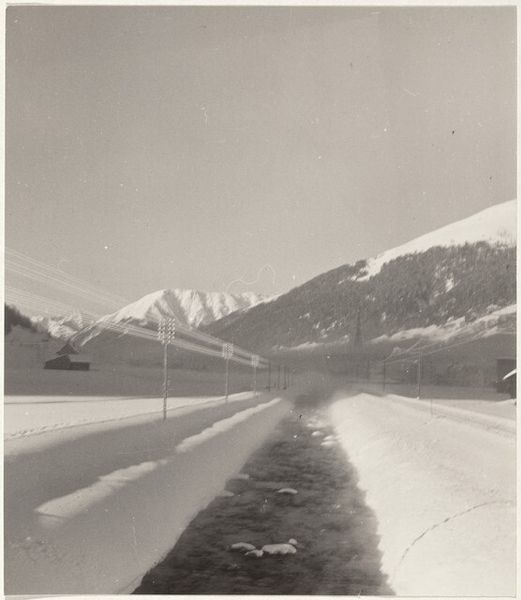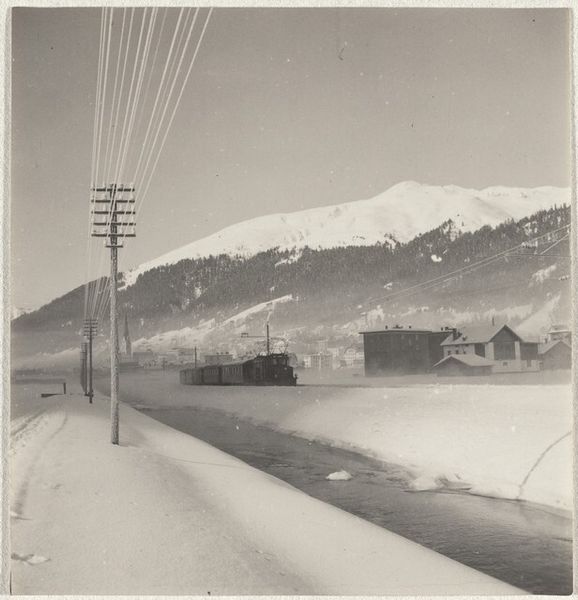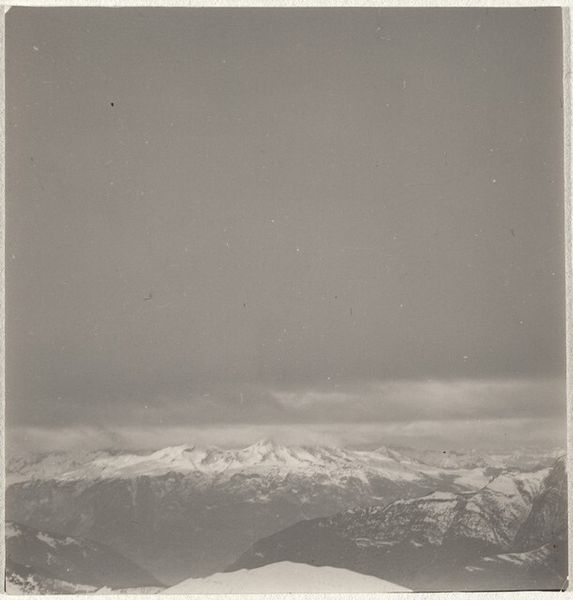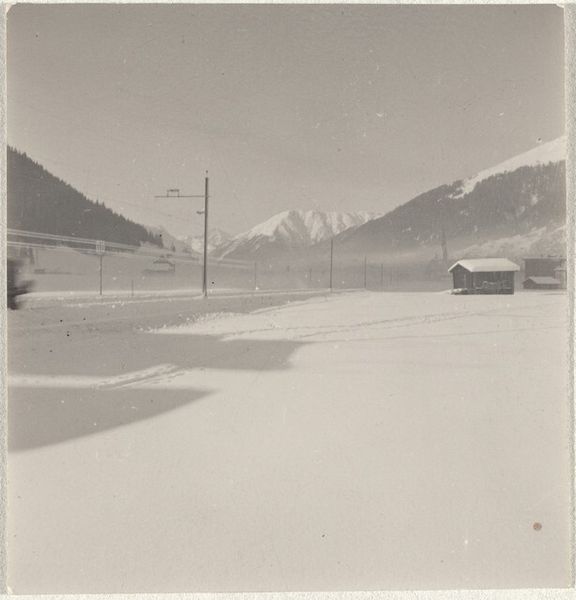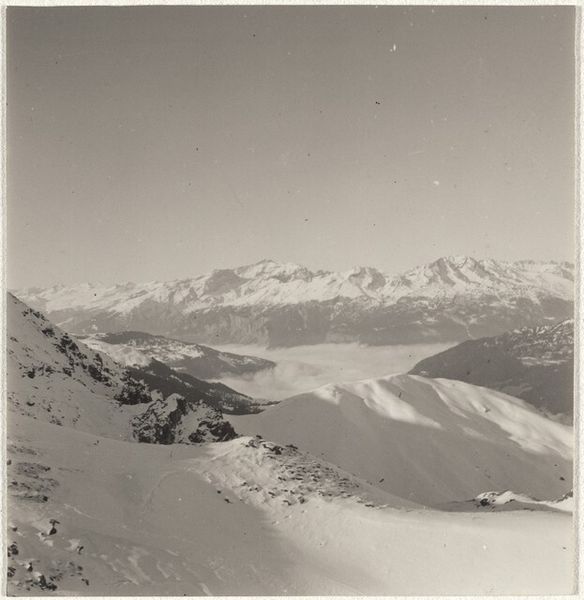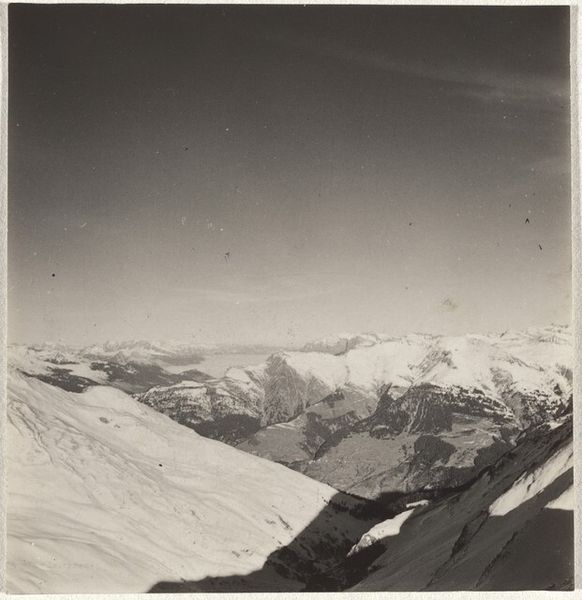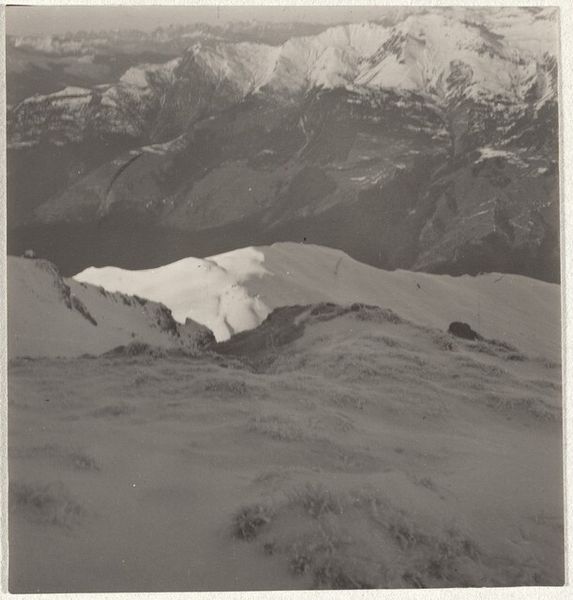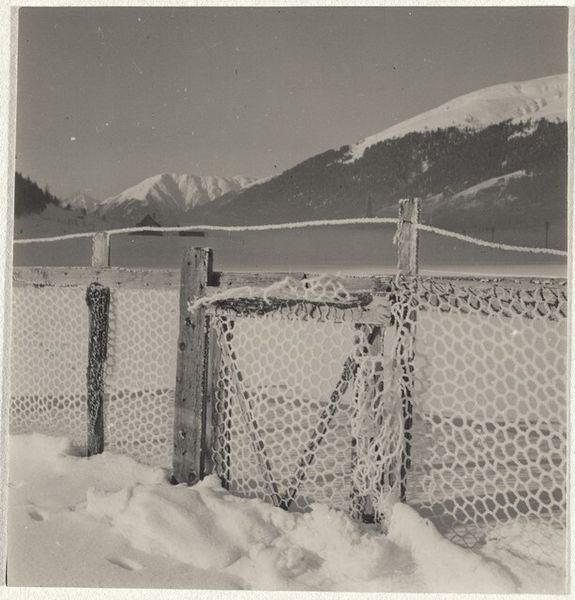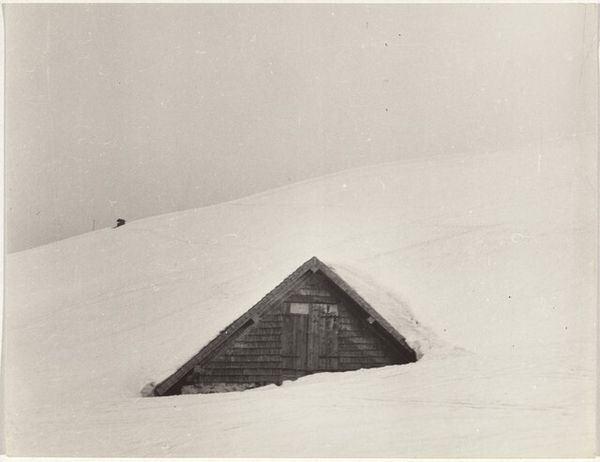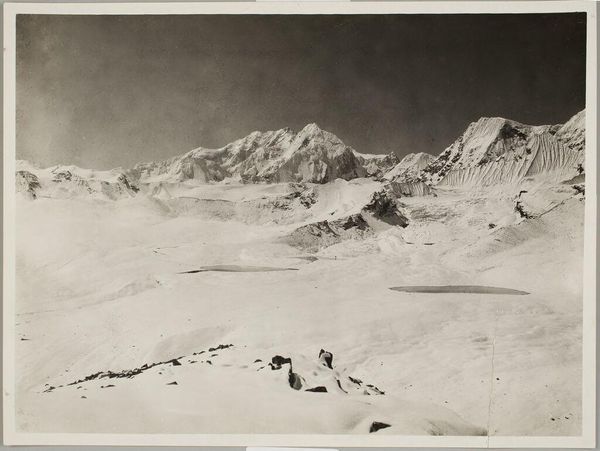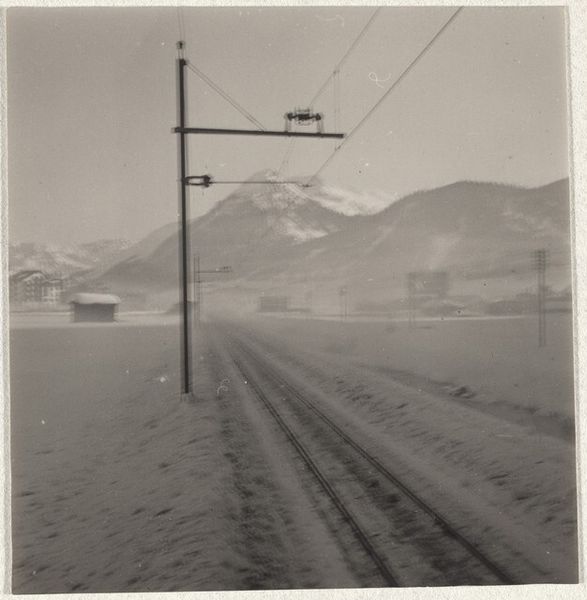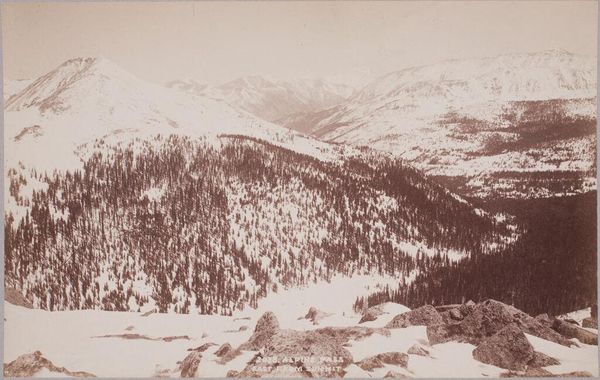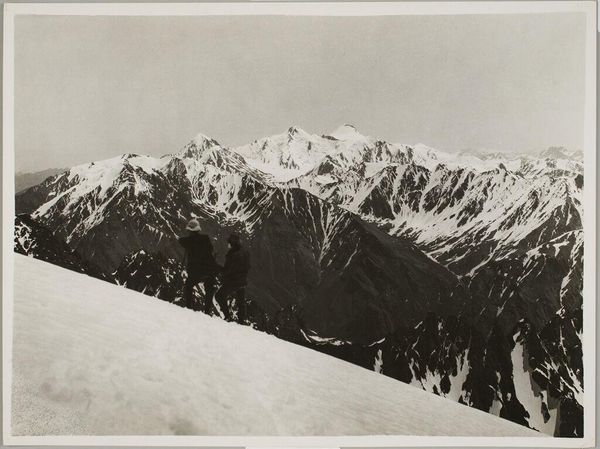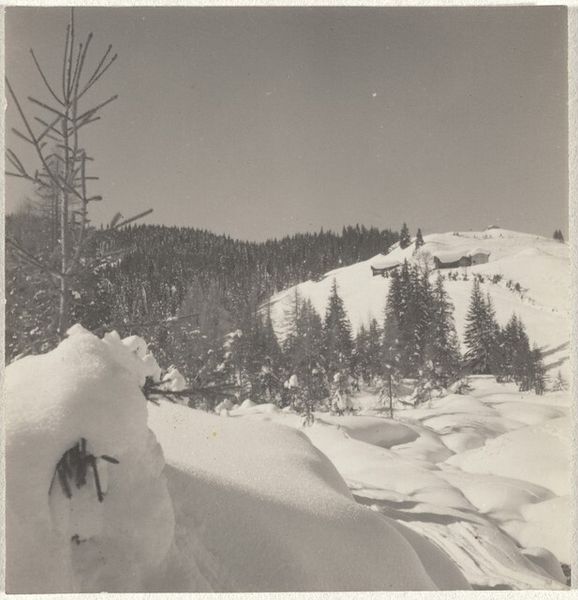
photography
#
landscape
#
outdoor photography
#
street-photography
#
photography
#
monochrome photography
#
realism
#
monochrome
Dimensions: sheet (trimmed to image): 17.8 x 23 cm (7 x 9 1/16 in.)
Copyright: National Gallery of Art: CC0 1.0
Curator: The stark expanse of snow filling the foreground immediately suggests isolation and silence. Editor: Indeed. We’re looking at a black and white photograph titled “Power lines--Landscape”, dating roughly from 1941 to 1945, credited to Robert Frank. What strikes me is the contrast: the immensity of the mountain set against those almost frail looking power lines cutting across the top of the frame. Curator: The power lines introduce an element of the modern world juxtaposed against nature's grandeur, a common visual theme that symbolizes human advancement and its connection—or perhaps disconnection—with the natural world. The visual contrast, however, also emphasizes a human mark across this wild landscape, literally bringing electricity and modernity. Editor: Precisely! Post-war Europe witnessed this juxtaposition constantly. Reconstruction efforts often meant integrating modern infrastructure into landscapes scarred by conflict. I imagine this photo captures that very tension of needing progress while confronting recent trauma. It's hard not to consider the potential political weight. This photograph doesn’t exist in a bubble. Curator: Symbolically, even the snow is multivalent. It's a symbol of purity, of a fresh start. Yet, its overwhelming presence here could represent the entombment of the past, perhaps even suppressed memories during that time. Does this place hold an implicit reference to something obscured from plain sight? What would a native to this area see in this view that we visitors do not? Editor: Those are critical questions. By emphasizing the mundane—power lines—Frank subtly reveals a larger, often overlooked, transformation occurring in everyday life after the war. It is not heroic subjects, it is what remains afterward. Curator: And these quiet images open our gaze onto these unsung transformations. Robert Frank truly makes us see how things change after a monumental event. Editor: Absolutely. He gives a record of society—even if a frozen one. We see beyond just what's in front of us—I appreciate how he reframes ordinary existence.
Comments
No comments
Be the first to comment and join the conversation on the ultimate creative platform.
